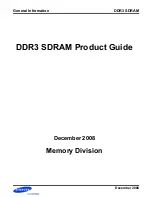
•
JTAG Boundary-Scan Testing in Cyclone V Devices
Provides more information about JTAG binary instruction code related to the
LOCK
and
UNLOCK
instructions.
Security Key Types
Cyclone V devices offer two types of keys—volatile and non-volatile. The following table lists the differences
between the volatile key and non-volatile keys.
Table 7-9: Security Key Types
Programming Method
Power Supply for Key
Storage
Key Programmability
Key Types
On-board
Required external
battery, V
CCBAT
(20)
• Reprogrammable
• Erasable
Volatile
On-board and in-socket
programming
(21)
Does not require an
external battery
One-time
programming
Non-volatile
Both non-volatile and volatile key programming offers protection from reverse engineering and copying. If
you set the tamper-protection bit, the design is also protected from tampering.
You can perform key programming through the JTAG pins interface. Ensure that the
nSTATUS
pin is released
high before any key-programming attempts.
To clear the volatile key, issue the
KEY_CLR_VREG
JTAG instruction. To verify the volatile key has
been cleared, issue the
KEY_VERIFY
JTAG instruction.
Note:
Related Information
•
on page 9-3
Provides more information about the
KEY_CLR_VREG
and
KEY_VERIFY
instructions.
•
JTAG Boundary-Scan Testing in Cyclone V Devices
Provides more information about the
KEY_CLR_VREG
and
KEY_VERIFY
JTAG instructions.
•
Cyclone V Device Family Pin Connection Guidelines
Provides more information about the V
CCBAT
pin connection recommendations.
•
Provides more information about battery specifications.
(20)
V
CCBAT
is a dedicated power supply for volatile key storage. V
CCBAT
continuously supplies power to the volatile
register regardless of the on-chip supply condition.
(21)
Third-party vendors offer in-socket programming.
Configuration, Design Security, and Remote System Upgrades in Cyclone V Devices
Altera Corporation
CV-52007
Security Key Types
7-36
2014.01.10















































